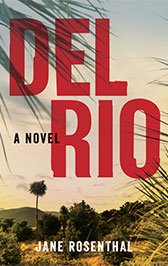The best novelists have a magician’s flair: they conjure fictional worlds so vivid that readers swear they can smell the tavern smoke or feel the cobblestones underfoot. Their “trick” is actually not a trick at all — it’s an allegiance to historical truths. They cherry-pick some facts, mostly fiction, weaving the real grain harvests of 17th‑century France or the blackout regulations of wartime London into terrains where dragons sorely test royal tax codes. These concrete details give both characters and stories ballast, letting the wildest inventions sail straight past a reader’s skepticism because the rigging is secured with historically accurate elements.
Details matter
A convincing realm stands — or sinks — on the quiet architecture beneath the prose: its fictional worlds need coherent geography, functional government, a plausible economy, lived‑in customs, resonant religion, and a layered history. Michelle Barker’s famous world‑building questionnaires march through exactly those checkpoints, reminding authors to ask not only what crops grow but what laws govern the grain tithe, or how mountain passes shape military strategy.
Yet an obsession with minutiae can morph into a rabbit hole: pour out every census datum and your novel reads like an almanac. Barker warns that the landscape must serve the plot, never eclipse it. The world is “merely the backdrop,” not the story itself. Keep only the telling details: a single cracked reliquary can hint at centuries of lost faith, a tariff stamp on a crate can whisper of empire. When each fact resonates with the theme, your setting hums like a living instrument.
Filling in the gaps
When you’re writing a novel, you will inevitably confront blank spaces in the record — those tantalizing “what really happened?” moments. Jane Rosenthal’s fresh WWII thriller, The Serpent Bearer, shows how to bridge them: she plants historically accurate events (Nazi espionage in Mexico, the birth of America’s COI spy agency) and slips fictional characters into fault lines, letting invention illuminate what archives omit.
The payoff for writers is artistic; for readers it’s almost neurological. Study after study confirms how reading fiction fosters empathy. This is no fairy tale: immersing ourselves in made‑up lives measurably sharpens our capacity to read real emotions and dismantle prejudice. By artfully filling history’s gaps — never lying about the pillars, only decorating the halls — you invite readers to rehearse compassion in safety, then carry that expanded heart into the world beyond your pages.
So build boldly, but build on bedrock. Let the past steady your hand, the details tighten your weave, and the human need for story — rooted in empathy — be the thread that stitches fact and fantasy into something truer than either one alone.
Jane's second novel!

A once-thriving Central Valley farm town, is now filled with run-down Dollar Stores, llanterias, carnicerias, and shabby mini-marts that sell one-way bus tickets straight to Tijuana on the Flecha Amarilla line. It’s a place . . .
Jane's first novel!

When Lili Golden’s beautiful sister, owner of The Palace of the Blue Butterfly art gallery, disappears in Mexico’s enormous capital, Lili abandons her comfortable stateside life to search for her. Soon she finds herself swept into her sister’s glittering world . . .
